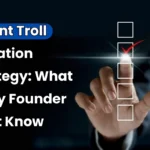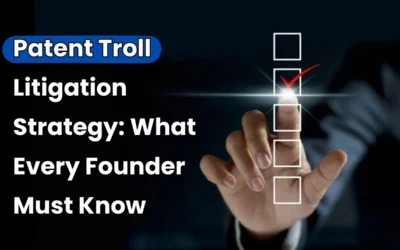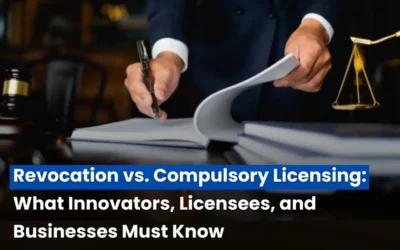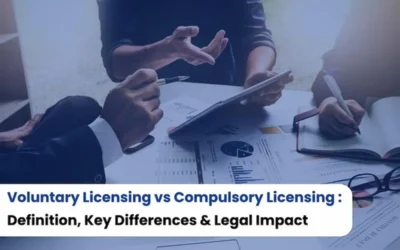
Patents are not venture-backed business competitive impediments, but rather magnificent intellectual property assets of higher quality which, indeed, may have the potential to turn a company’s value upside down, lure possible acquirers, and have bargaining power in mergers and acquisitions or initial public offerings (IPOs). A patent exit strategies are only one component of a start-up growth strategy, especially where venture capitalists anticipate high return on investment. A balanced patent portfolio strategy is a defines strategy and source of cash flow, setting a start-up up to rein in M&A negotiations or IPO filings.
Why Is a Patent Exit Strategy Crucial for Start-ups?
Patent exit strategy is just one example of planning how start-ups leverage their patent portfolio during their market exit. It’s especially important to venture-backed companies that need to raise capital, sell profitably, or go public successfully. That’s why it’s so important:
- Maximizing Start-up Valuation: Patented innovation is perceived by investors as a protection moat, and thus start-ups possessing valuable patent portfolios are more valuable.
- Attracting Acquisition Offers: Start-ups are acquired by technology billionaires and entrepreneurs as a step towards acquiring intellectual property rights and discouraging other players from entering the market.
- Revenue Generation: Patent selling or licensing creates revenues before exit, enhancing the value of the business.
- Reducing Exit Risks: Patent portfolio strategy is clearly defined so that invalidation and litigation risk at the time of acquisition is minimal.
- Strengthening Investor Confidence: Venture investors like to invest in start-up companies that have patents because it maximizes the opportunity for high-exit values.
Core Elements of a Patent Exit Strategy
1. Building a Robust Patent Portfolio
Start-ups are to create a robust patent portfolio of good products, technologies, and processes. The greater the diversity in the patent portfolio, the stronger the defences and multiple opportunities for value realization for a start-up.
Best Practices:
- Protect early by patenting in order to secure priority rights and prevent competitors from getting similar inventions patented.
- Overseas patents in case of pursuing the business globally, more notably in the United States, Europe, China, Japan, and other IP-led economies.
- Optimize for valuable patents—those which are defending the most valuable components of the start-up core technology or preventing rival innovation.
2. Aligning Patent Portfolio with Business Objectives
The patent strategy should be aligned with the business and vision of the start-up. Software companies can have software patents or business method patents, and biotech companies can have drug development patents or medical device patents.
Key Things to Consider:
- Is the differentiated value proposition of the firm aligned with the supporting patent portfolio?
- Is patent filing aligned with the product road map of the start-up?
- Are the patents hindering the competition from acquiring good space in developing technology?
3. Patent Valuation and Assessment
Patent appraisal is an important part of M&A due diligence or IPO disclosure. The start-ups must ascertain the economic worth of the patents so that they can negotiate well with possible acquirers.
Common Valuation Methods:
- Cost Method: Calculation of patent development, R&D, filing, and prosecution expenses.
- Market Approach: Compares recent start-up value of patents or license transaction value of the company to recent license or patent acquisitions.
- Income Approach: Projection of future royalty payment, settlement, license revenue, or litigation that the patent portfolio will generate.
4. Patent Monetization Planning
It takes a patent magnetizer’s skill to develop a portfolio of patents so appealing to potential acquirers or public investors that it will make a start-up very attractive to them. Patents are monetized by
- The Patent Licensing: Granting permission to third party usage of the patent for prepayment of license or royalties.
- Patent Sales: Selling non-core third-party patents for prefer.
- Patent Pools: Participating in industry consortia to pool the patents—to license out—of value mainly for standards-based sectors like telecommunications or semiconductors.
5. Due Diligence and Risk Mitigation
Venture-capital-backed firms should make their patents encumbrance-free and enforceable before negotiating exit.
Key Steps:
- Conduct Freedom-to-Operate (FTO) Analysis: Eliminate infringing third-party patents from the start-up products or services.
- Identify Patent Infringements: Keep a watchful eye out for competitors and keep a keen eye on patent ground stages for fear of infringement.
- Resolve Ownership and Licensing Disputes: Eliminate any co-ownership, pre-assignment, or employee IP claims.
Real-World Case Studies
Google’s Acquisition of Motorola Mobility ($12.5 Billion)
Google purchased Motorola Mobility in 2012 mainly for a portfolio of more than 17,000 patents, most of them mobile communications technology. The purchase set the foundation for Google’s IP and provided legal protection for Android smartphones against patent infringement litigation by its competitors like Apple.
Facebook’s Acquisition of Oculus VR ($2 Billion)
Facebook’s 2014 acquisition of Oculus VR was not only about VR hardware technology but also Oculus virtual reality systems and interactive environment patents. Facebook used these patents to corner the AR/VR market and establish a foundation for future met averse technologies.









